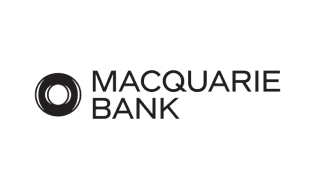
Australian Unity Freedom Saver - DISCONTINUED
- 4.35% p.a. max variable rate
Pros & cons
- 4.35% p.a. ongoing, standard variable rate
- No deposit or withdrawal conditions
- No monthly fees
- Maximum interest rate only applies to the first $50,000
While it's true the highest interest rates are offered on savings accounts that have lots of different monthly conditions attached, you can still get a great rate on your savings with no conditions to meet at all.
These accounts allow you to simply park your cash then set-and-forget while it earns interest.
We currently don't have that product, but here are others to consider:
How we picked theseThe Finder Score is a simple score out of 10. The higher a savings account's score, the better we think it is for the average customer.
We score each savings account in our database of hundreds based on a data-driven methodology with 2 main criteria: Does the account offer a high interest rate? And is it easy for savers to actually earn that rate?
A no-conditions savings account is one that lets you earn an ongoing interest rate on your money with no hoops to jump through to get it.
Most high interest savings accounts require you meet certain monthly conditions to earn the maximum variable rate advertised. This usually includes depositing a certain amount of money each month (often upwards of $1,000!) and restricting withdrawals.
A savings account with no conditions doesn't require you to do anything special to get the advertised rate.
Some savings accounts with no conditions will offer one standard, ongoing rate. Others will offer a short-term introductory rate, then a standard, ongoing rate.
One ongoing rate: The advertised rate is the one you'll get from day one and you'll keep earning this ongoing without needing to do anything.
Intro rate plus ongoing rate: You'll earn a special introductory rate for the first 4 months or so, then after this you'll earn the standrad, ongoing rate. You don't need to meet any monthly conditions to earn the higher introductory rate, however you often do need to be a new customer.
It's worth noting that all interest rates offered on savings accounts are variable, which means they can change at any time if the bank decides.
These accounts were winners in the 2025 Finder Awards.

Pros & cons
Why we like it

Pros & cons
Why we like it

Pros & cons
Why we like it
If a savings account has monthly conditions attached, this is what you need to do in order to get the maximum variable rate available with the account.
Some of the most common conditions you'll see include:
Here are some examples of popular savings accounts and their monthly conditions to get the high rate:
| Savings account | Account conditions for maximum variable rate |
|---|---|
| ING Savings Maximiser | 4.75% when you link to an ING Orange Everyday account, deposit $1,000, make 5+ card purchases, and grow your balance each month. |
| Ubank Save | 5.1% when you deposit each month. |
| Suncorp Growth Saver | 4.3% when you grow your balance by $200 each month and make no more than 1 withdrawal. |
| CommBank Goal Saver | 4.25% when you make a deposit and grow your balance during the month (excluding interest). |
| Westpac Life | 4.25% when you make a deposit and grow your balance during the month (excluding interest). |
| Bank of Queensland Smart Saver | 4.6% when you deposit $1,000 and make 5 transactions per month. |
If you can easily meet the account conditions, that's great. But if you can't, you'll only earn the standard variable rate that month which is often very low (almost 0% p.a.!).
Some savings account conditions are harder to meet than others. If you're tempted into getting the account with the highest interest rate but tough monthly conditions, you could be setting yourself up for a lot of stress trying to meet these.
In some cases, you could be better off choosing an account with a lower rate but no conditions to meet - because at least you're guaranteed to earn it.
A savings account with no conditions might suit you well if:
Consider the following features when you're comparing accounts:
What's the ongoing interest rate?
Many accounts with no conditions will offer a special introductory interest rate for the first 4 months or so. After the introductory period, the rate will drop down to the standard, ongoing interest rate. When looking at accounts, make sure you check what the ongoing rate will be after the introductory period ends.
What's the balance limit?
One benefit of choosing a savings account with no conditions is they usually pay interest on large balances. In comparison, savings accounts that have higher rates and conditions to meet will often only pay the higher rate on balances up to $50,000 or $100,000.
If you've got a super large balance, look for an account that pays interest on the whole amount.
Do you need a linked account?
Some banks will require you to have a bank account open in your name as well as the savings account. This may or may not suit you, but it's worth checking if you do have a preference on this.
Compare Ubank Save and Up Bank Saver accounts. See rates, features, fees and which suits you best.
Compare ING Savings Maximiser and Ubank Save Account. See rates, features, fees and which suits you best.
Read Finder's review of the Bendigo Bank Reward Saver. Learn how you can earn the maximum bonus interest rate with this account.
Earn 4.20% p.a. on your savings each month you make at least one deposit and make no more than one withdrawal.
The Virgin Money Boost savings account (for 18-24 year olds) offers bonus interest each month you deposit money and meet the purchase requirements. Here's how the account works and how to apply.
See historical interest rates for savings accounts since January 2012.
Kickstart your savings plan with a high interest savings account.
Rabobank PremiumSaver account is an option worth considering for savers looking to boost their savings balance, offering no ongoing fees, a competitive variable rate and 24/7 online access to your funds.
See some of the best savings accounts in Australia right now with high interest rates and no fees, plus tips to help you find the best savings account for you.
Our range of simple calculators can help you plan your finances and compare potential interest earned.